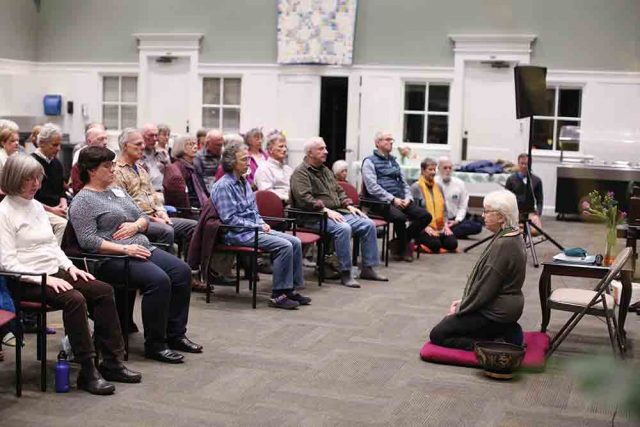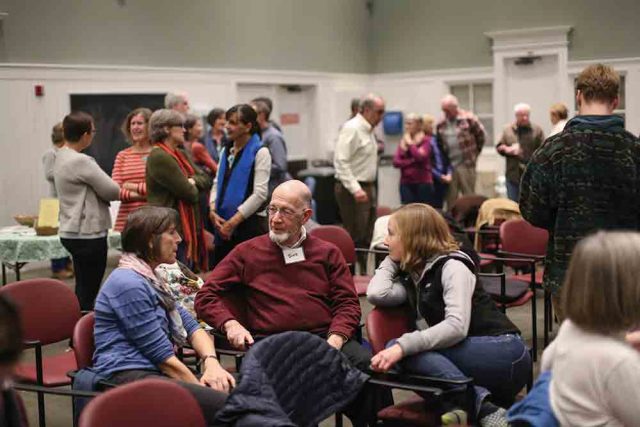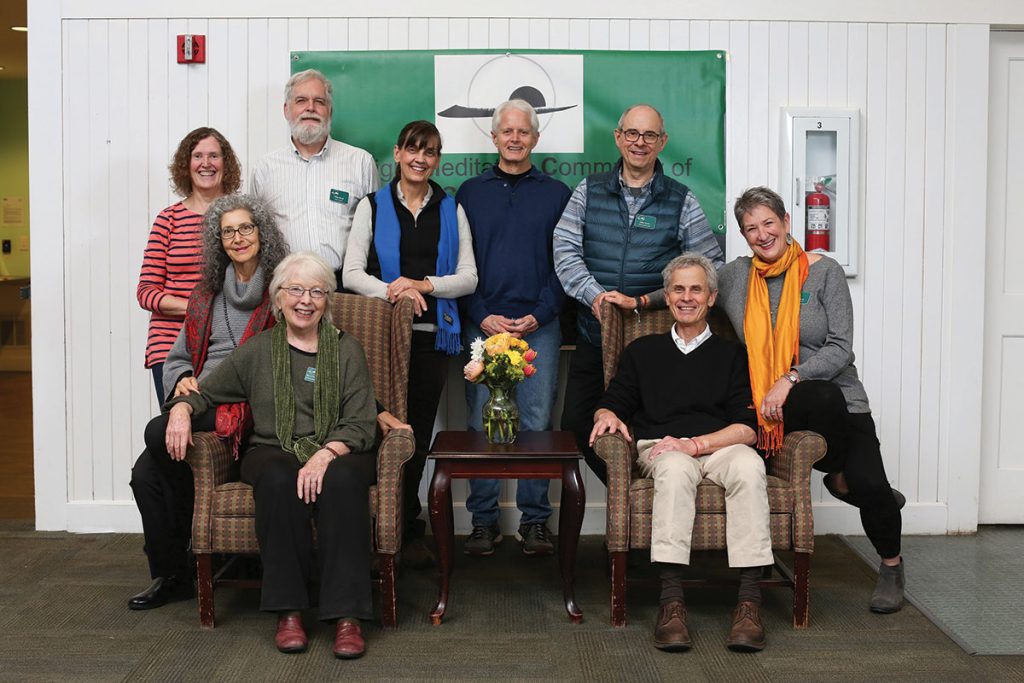City: Charlottesville, Virginia
Tradition: Insight Meditation (Vipassana)
Year Founded: 1996
Number of Members: 175
Meeting Place: Rented room at an adult care center
Tricycle talks with Jeffrey Fracher, the president of Insight Meditation Community of Charlottesville (IMCC) and one of the sangha’s 13 teachers:
You have a large sangha—approximately 175 members—for a modest- sized city of 60,000. What are your regular offerings, and how many people show up? Our regular meeting is on Tuesday night. We have a 40-minute sit, followed by announcements and housekeeping, then a 35- or 40-minute dharma talk by whoever led the meditation that night. About half of our teachers went through Spirit Rock’s Community Dharma Leaders program; the others have trained with Tara Brach. We probably average 40 to 60 people on any given Tuesday night.
We offer four “introduction to meditation” classes a year. We also have two weekday sits downtown at a nonprofit community healing center called Common Ground. It’s quite a distance from our regular meeting place at an adult care center. About 10 or 20 people come, and they have sort of become their own sangha.
We also hold two residential retreats a year at a center in the Blue Ridge Mountains.

How did your sangha respond to the “Unite the Right Rally,” which brought thousands of white nationalists and white supremacists as well as counterprotesters to Charlottesville in August? We became part of the Charlottesville Clergy Collective, a group of faith communities that came together on both days of the rally, bearing witness to the violence. It was powerful. Being on the front lines goes to our own mission of trying to relieve suffering and push back on hatred. It got people off their rear ends and wanting to do something about this whole thing that descended on our quiet little city. In addition, we had a bunch of sits during the rally at our downtown center.
The rally protested the planned removal of a statue of Confederate General Robert E. Lee. at weekend, crowds marched through the street with torches, chanting things like “White lives matter” and “Jews will not replace us.” There were violent clashes between the white nationalists and the counterprotesters. A man drove a car into a crowd, killing one counterprotester and injuring 19 others. A helicopter monitoring the scene also crashed that day, killing two state troopers. How did these tragic events affect the work your sangha is doing? About a week or two after the Klan and the Nazis were here, we brought in David Campt, an author and speaker who teaches a “white ally toolkit”—a way to engage with white people on racial issues without offending, scaring, shaming, or judging them. We had about 100 people come. But this is still within the realm of dealing more with our white peers. Some members are more engaged in the minority communities here, but we’ve got a lot of work to do in that area.
After the Klan was here, the police department contacted me about doing something with the officers. Some of the young ones especially had been traumatized and subjected to horrible stuff during the rally. We’ve been teaching the officers basic meditation and emotional resilience, including how to breathe when you’re in a high-intensity situation.

Did you see any breakthroughs beyond your sangha after the rally? Charlottesville has a tendency to be self-congratulatory when it comes to how liberal we are, but the truth is that not much has changed in terms of racial dynamics. The rally brought a lot of people off the sidelines and engaged in more dialogue with folks in lower-income and minority communities. But that is very much in its infancy.
About three years ago, my wife and I moved from a typical white neighborhood downtown to a predominantly black neighborhood. We have Section 8 housing next door and public housing across the street. This isn’t just me; others have made an effort to get to know people and try to understand what the experience of growing up black in the South and Charlottesville in particular is like. So this is an ongoing priority. It’s also an ongoing challenge.
How diverse is your sangha? We don’t have the degree of diversity that we’d like. Our members are largely middle- and upper-middle-class white, skewed toward the slightly older demographic, although we have started to get more young people. We do have a lot of University of Virginia faculty, staff, and students who participate, as well as a fairly active LGBTQ contingent.
I think we’re not unique in this way, and it’s something we’re actively trying to address.
How so? We’ve had Ruth King, an African American Insight Meditation teacher who does race awareness training, come six times to work with our sangha. Her message to us was this: “You’ve got to do your own work as white people. Don’t tell us what we need. Don’t try to fix us. You need to fix yourself.” Out of her trainings we’ve developed about ten small “White Awake” groups of people who work on racial justice and outreach. This has borne fruit in terms of raising awareness among white folks about the level of racial oppression all over the country, and here as well, since Charlottesville had its own terrible racial history, even before the Klan came.
—Wendy Joan Biddlecombe, Web Editor
Tricycle wants to learn about your sangha! Write news@tricycle.org to be considered.
Thank you for subscribing to Tricycle! As a nonprofit, we depend on readers like you to keep Buddhist teachings and practices widely available.
